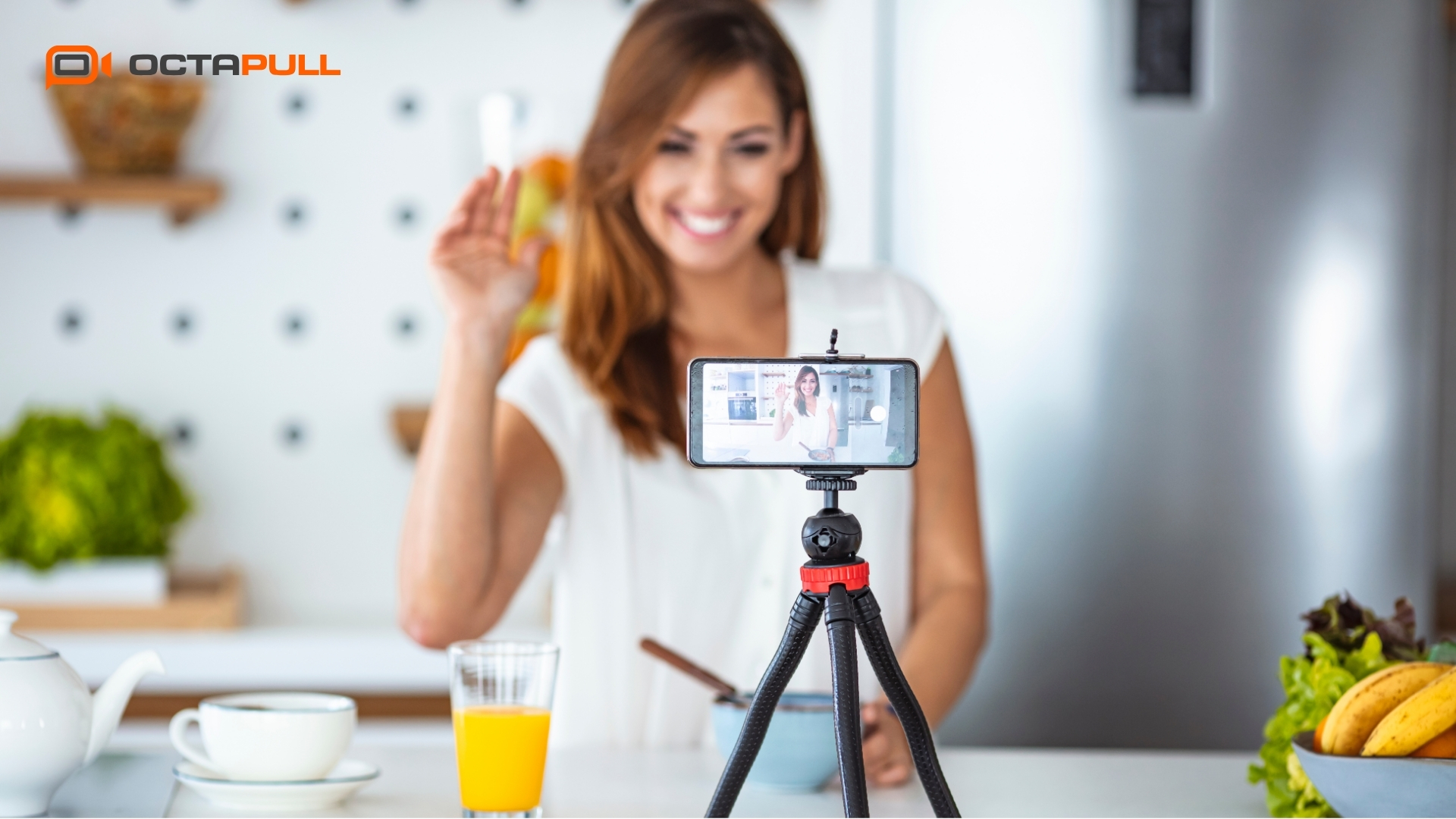PR stands for Public Relations, and it’s the practice of managing how your brand is perceived by the public, the media, and your target audience.
In 2025, public relations goes far beyond press releases and news coverage; it now includes digital storytelling, influencer partnerships, social media visibility, and online reputation management. This beginner-friendly guide will walk you through the essentials of modern public relations.
What Is PR?
It stands for Public Relations, and it is the practice of building and maintaining a positive image of a person, brand, or business in the eyes of the public. It’s all about creating trust, shaping opinions, and keeping your audience informed, often through media coverage, events, or digital content.
Some of the key functions of public relations include:
- Reputation Building: Helping a brand gain credibility and goodwill over time.
- Media Relations: Working with journalists and media outlets to get positive stories published.
- Crisis Communication: Responding to bad press or unexpected situations to protect a brand’s image.
- Storytelling: Crafting compelling messages that connect emotionally with the audience.
Public relations is often confused with marketing or advertising, but they’re not the same.
While advertising is paid and focuses on promoting products, marketing aims to drive sales; public relations focuses on earning attention and building long-term trust through credible, unpaid communication.
Who Needs Public Relations?
Public relations activities aren’t just for big corporations; they’re a valuable tool for anyone who wants to shape how they’re seen by the public.
In today’s fast-moving digital world, strong public relations can help businesses and individuals stand out, build trust, and stay relevant.
- Startups and Small Business Owners: When you’re just getting started, visibility is everything. Public relations can help you get noticed in your local community or industry and build credibility without a big advertising budget.
- Personal Brands and Influencers: Whether you’re a content creator, speaker, or thought leader, public relations helps you craft your public image, land media opportunities, and build authority in your niche.
- Large Companies Managing Brand Image: Big brands rely on public relations to maintain a positive brand image, manage crises, and consistently share their mission and values with the public.
- Nonprofits and Advocacy Groups: These organizations use public relations to raise awareness, promote causes, gain support, and attract donations, all by telling compelling stories that resonate with the public.
No matter the size of your brand or organization, public relations activities are a powerful way to earn attention, connect with your audience, and stay top-of-mind in your space.
What is Public Relations and How Does It Work in 2025? 
Public relations in 2025 looks very different from what it did a decade ago. While the goal is still to build trust and manage reputation, the methods have evolved to match our fast-paced, digital-first world.
Today’s public relations professionals use a mix of traditional strategies and modern tools to get their message across effectively.
- Press Releases: Still essential for announcing news, launches, and milestones to the media in a professional format.
- Media Outreach: Building relationships with journalists, editors, and podcast hosts to secure interviews, features, and mentions.
- Social Media and Digital Platforms: Platforms like X (Twitter), LinkedIn, and Instagram are now vital for managing brand voice, responding in real-time, and reaching audiences directly.
- Influencer Collaborations: Partnering with trusted voices who can authentically promote your brand to their followers.
- Crisis Management: Responding swiftly and strategically when things go wrong, whether it’s a bad review, online backlash, or an unexpected incident.
In 2025, public relations campaigns are smarter and more data-driven than ever. AI tools help write press releases, suggest headlines, and even predict media trends.
Media monitoring platforms track your brand mentions in real-time across news, blogs, and social media. And cloud-based tools help public relations teams collaborate seamlessly, whether in the same office or across time zones.
Modern public relations is about being proactive, responsive, and strategic, and using technology to stay one step ahead.
What Does a PR Campaign Include?
A successful public relations campaign doesn’t happen by accident; it’s a carefully planned effort designed to share the right message with the right people at the right time. Whether you’re launching a product, promoting a cause, or managing a reputation, every campaign typically follows a few key steps:
1. Goal-Setting and Strategy
Every campaign starts with a clear objective. Do you want to increase brand awareness, manage a crisis, or promote an event? Defining your goals helps shape every part of your public relations strategy.
2. Message Development
Crafting a core message that’s consistent, memorable, and aligned with your brand. This message should be adaptable across media platforms and resonate with your target audience.
3. Media List Building
Identifying relevant journalists, bloggers, podcasters, and influencers who might be interested in your story. A well-researched media list increases your chances of coverage.
4. Content Creation
Producing high-quality materials like press releases, blog posts, social media content, and video clips that tell your story clearly and persuasively.
5. Outreach & Follow-Up
Sending personalized pitches to your media contacts and following up respectfully to build relationships and encourage coverage.
6. Measuring Results
After the campaign, it’s important to track success. This includes media coverage, brand sentiment, online engagement, and whether you achieved your original goals.
Public relations campaigns may vary in size and focus, but these building blocks are essential to creating an effective and measurable impact.
How PR Helps Build Brand Reputation
Your brand’s reputation isn’t just what you say about yourself; it’s what others say when you’re not in the room. That’s where public relations comes in. Public relations helps shape how people perceive your brand by creating trust, credibility, and consistency over time.
Earned Media vs. Paid Media
Public relations focuses on earned media, coverage you don’t pay for, like news articles, interviews, and social media mentions. It’s more trusted than ads because it comes from third-party sources. While paid media (like advertising) can drive visibility, earned media builds deeper credibility.
Consistent Storytelling
Telling a clear, authentic story across all platforms helps people understand what your brand stands for. Whether through interviews, press releases, or social media posts, public relations ensures your message stays consistent and aligned with your values.
Managing Negative Feedback or Crisis
When something goes wrong, public relations is your first line of defense. From crafting official statements to guiding public response, public relations helps brands handle criticism with transparency, empathy, and professionalism, often turning a negative into an opportunity to show integrity.
Beginner’s Guide to Creating a Public Relations Strategy 
It might sound intimidating, but breaking it down into clear, manageable steps makes it much easier. Whether you’re a solo entrepreneur or part of a growing team, here’s how to build a public relations strategy:
Step 1: Define Your Goals
Start by being crystal clear about what you want to achieve.
- Getting media coverage for a new product or service
- Boosting brand credibility in a crowded market
- Attracting investors or partners
- Improving your online reputation
- Managing a public issue or crisis
Tip: Make your goals SMART (Specific, Measurable, Achievable, Relevant, and Time-bound). For example: “Get featured in 3 local publications within 60 days of product launch.”
Step 2: Know Your Audience
Who are you trying to influence or reach through these activities? Understanding your audience helps you tailor your message and choose the right channels.
Ask yourself:
- Who are they (customers, media, investors, partners)?
- What problems do they care about?
- Where do they get their information (social media, newspapers, blogs, YouTube)?
- What tone or language will resonate with them?
Example: A skincare startup targeting Gen Z would likely focus on platforms like TikTok and Instagram, and use informal, relatable language.
Step 3: Craft Your Key Message
Your message is what you want people to remember. It should:
- Communicate what makes your brand unique
- Reflect your brand values and tone
- Be adaptable to different platforms and audiences
Create 2-3 variations of your core message to fit different contexts: media interviews, social posts, email outreach, etc.
Formula: “We help [audience] solve [problem] by [what you offer].”
Example: “We help busy professionals eat healthier by delivering chef-crafted, plant-based meals to their door.”
Step 4: Choose the Right Channels and Tactics
Different goals require different public relations tools. Here’s a mix of traditional and digital tactics you can choose from:
- Press Releases: For major news, product launches, or milestones.
- Media Outreach: Pitch your story directly to relevant journalists, bloggers, or podcasters.
- Social Media: Use platforms to control your narrative, share updates, and respond to feedback in real time.
- Influencer Partnerships: Work with influencers to amplify your message authentically.
- Guest Articles or Op-Eds: Establish thought leadership by writing for blogs, magazines, or industry websites.
- Community Events/Webinars: Build trust by engaging with your audience face-to-face or virtually.
Tip: Don’t try to be everywhere. Focus on 2-3 channels where your audience is most active.
Step 5: Monitor, Measure, and Adapt
Once your campaign is live, track its performance. You can measure public relations success through:
- Media coverage: Who mentioned you, where, and how often?
- Backlinks and website traffic: Did media placements drive traffic to your site?
- Social engagement: Are people liking, sharing, or talking about your content?
- Brand sentiment: Are mentions mostly positive, neutral, or negative?
- Goal completion: Did you hit the goals you defined in Step 1?
Use tools like Google Alerts, Meltwater, Mention, or Brand24 to monitor mentions and track results.
And most importantly, stay flexible. If something isn’t working, pivot. PR is part strategy, part experimentation.
Frequently Asked Questions
1. What Does PR Mean?
PR stands for Public Relations. It’s the practice of managing how a person, company, or brand is perceived by the public, media, and stakeholders. The goal is to build a positive reputation and earn trust through strategic communication.
2. What Exactly is a PR Job?
A public relations professional’s job is to help brands tell their story in a way that attracts positive attention. This includes writing press releases, pitching to journalists, managing social media images, organizing events, handling crises, and maintaining relationships with the media.
At its core, Public Relations is about getting the right message to the right people at the right time.
3. Do Small Businesses Need Public Relations?
Absolutely. PR can help small businesses gain visibility, build credibility, attract customers, and compete with bigger brands, often without a massive budget. Even a few well-placed media features or social mentions can make a big impact.
4. How Long Does It Take To See Results From PR?
Public Relations is not always instant. You might start seeing small wins, like social shares or local media mentions, within a few weeks. But building strong media relationships and a trusted reputation can take 3 to 6 months or more. Like SEO, PR is a long-term investment with compounding results.
Conclusion
PR is all about managing how your brand is seen and trusted by the public, media, and your target audience. In 2025, It is more dynamic and essential than ever, combining traditional media outreach with digital storytelling, influencer collaborations, and real-time reputation management.
Whether you’re a small business owner, a startup founder, or a new marketer, understanding and using public relations can help you build credibility, grow visibility, and connect authentically with your audience.
The good news is you don’t need a huge budget or experience to get started; with a clear strategy and consistent effort, anyone can use public relations to make a meaningful impact.
Take the first step today by defining your goals and crafting your message. Your brand’s reputation is one of its most valuable assets; nurture it wisely with smart public relations.

